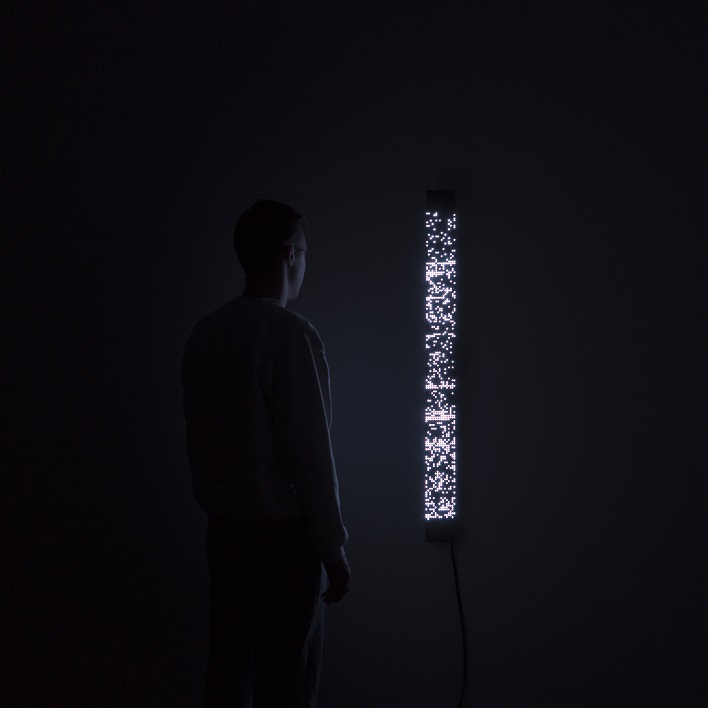LGM#1
In the winter of 1967 Cambridge radio astronomers discovered a “odd bit of scruff”, a signal that didn’t match the profile of any known astrophysical source. Its characteristics conflicted with the generally chaotic nature of most cosmic phenomenon. It seemed of such an artificial nature that for a few weeks members of the group seriously considered whether they had discovered an extraterrestrial intelligence. Consequently the phenomenon was nicknamed LGM#1 – Little Green Men. At least until further findings lead to a natural explanation: the discovery of the so called Pulsars. These are rapidly spinning neutron stars, radiating opposing beams of radio waves out into space. Whenever one of those beams sweep across the Earth, it appears as the distinctive short but pulsating signal.
Currently 2659 Pulsars are known. Sorted by their discovery date, each one of them correlates with one of the blinking LEDs on the long, slim panel. The lights follow the rhythms of those super-massive rotating remnants of stars. Some blink only once every few seconds. Others flash several hundred times in the same period. Together those very precise cosmic metronomes create the flickering, seemingly chaotic aesthetics of the light installation LGM#1.
mixed media light object
size: 1160 × 100 × 40mm
Created with the use of ATNF Pulsar Catalogue (www.atnf.csiro.au)
Manchester, R. N., Hobbs, G.B., Teoh, A. & Hobbs, M., AJ, 129, 1993-2006 (2005)
Thanks to Anna Dilja Sigurdardottir.

